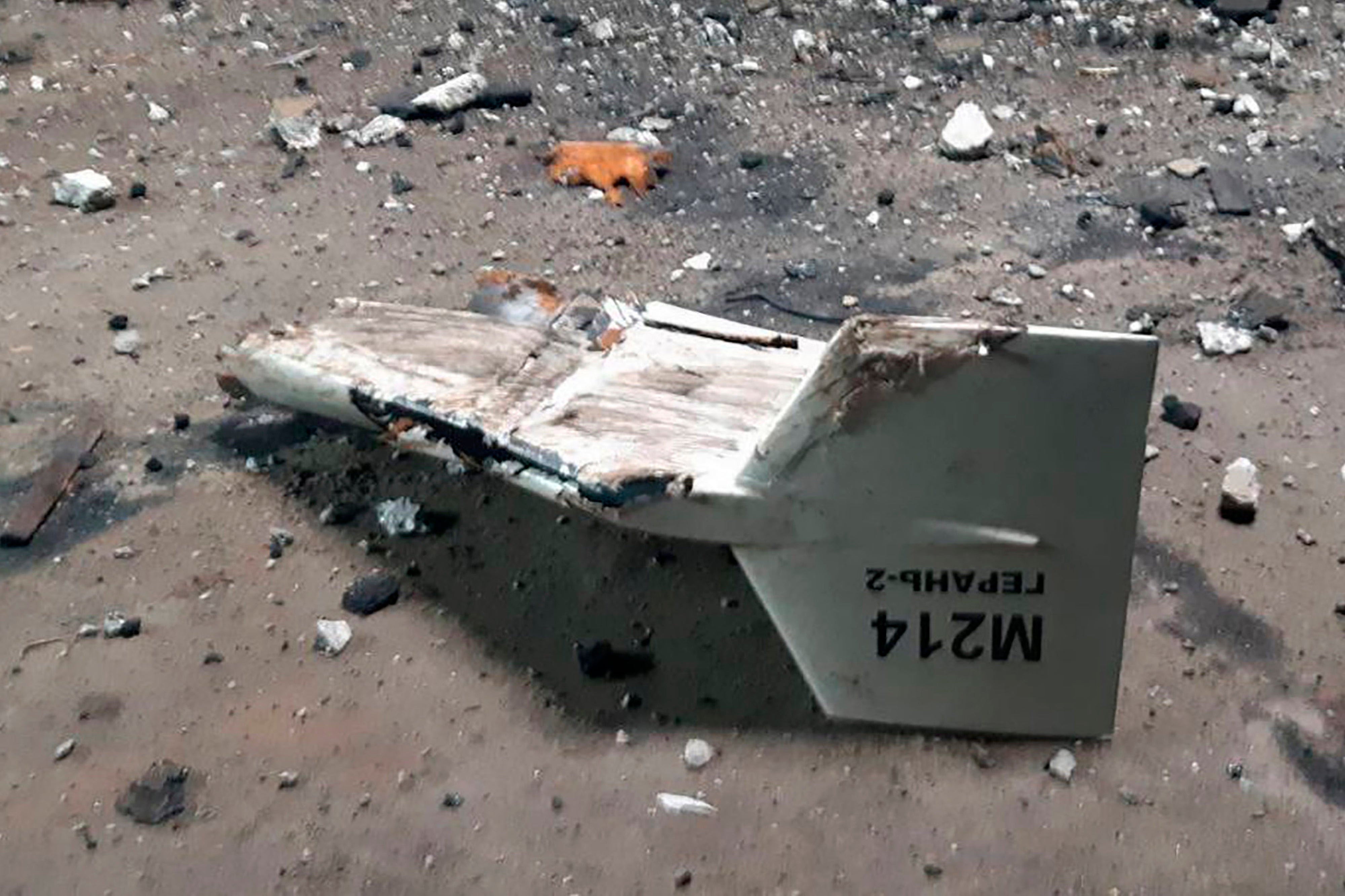US officials point to Russia using Iranian drones in Ukraine
American defense officials sought to dispel any doubt that Iran is supplying drones for Russia’s war in Ukraine, releasing photos and analysis of unmanned aircraft deployed in the conflict to demonstrate Tehran’s involvement

Your support helps us to tell the story
From reproductive rights to climate change to Big Tech, The Independent is on the ground when the story is developing. Whether it's investigating the financials of Elon Musk's pro-Trump PAC or producing our latest documentary, 'The A Word', which shines a light on the American women fighting for reproductive rights, we know how important it is to parse out the facts from the messaging.
At such a critical moment in US history, we need reporters on the ground. Your donation allows us to keep sending journalists to speak to both sides of the story.
The Independent is trusted by Americans across the entire political spectrum. And unlike many other quality news outlets, we choose not to lock Americans out of our reporting and analysis with paywalls. We believe quality journalism should be available to everyone, paid for by those who can afford it.
Your support makes all the difference.American defense officials on Tuesday sought to dispel any doubt that Iran is supplying drones for Russia’s war in Ukraine, releasing photos and analysis of unmanned aircraft deployed in the conflict to demonstrate Tehran’s involvement.
During a briefing in London, analysts from the Defense Intelligence Agency displayed photos of drones that attacked Ukraine alongside images of those previously traced to Iran. A comparison of design details such as tail fins, nose cones and landing gear shows that the weapons used in Ukraine are “indistinguishable” from Shahed-131 and -136 attack drones and Mohajer 6 unmanned aerial vehicles used in the Middle East.
The effort to “show the homework’’ is intended to help persuade governments or international agencies of Tehran’s involvement. Iran has said it supplied a “small number” of drones to Russia before the invasion of Ukraine but has denied providing any more since troops crossed the border last February.
The evidence proves otherwise, an official from the Defense Intelligence Agency said while speaking on condition of anonymity because of the sensitivity of the information.
“Iran is a partner in the conflict with Russia,’’ the official said.
U.S. officials also suggested that Iran was gleaning valuable information by deploying its technology in Ukraine, including how the drones perform in different weather conditions, seeing how they can be used under different scenarios and getting real life feedback that allows them to make the weapons more effective.
For example, after learning that civilians were able to flee because they could hear the drones approaching, weapons designers are likely to make future models quieter, the official said.
“They are getting to see it used on a mass level,’’ the official said. “It’s a process for them. Iran is able to see this feedback and make adjustments.’’
The war in Ukraine also allows Iran to demonstrate the capabilities of its technology to other potential buyers.
“Iran sees this as a great marketing opportunity,’’ the official added.
The analysis was released a day after Britain presented evidence that Iran is supplying advanced weapons to the Houthi rebels in Yemen.
Britain presented drones and missiles seized from vessels in the Gulf of Oman to the United Nations as evidence that Iran is violating Security Council resolutions barring weapons shipments to the Houthis.
The timing of the release suggests Western powers are hardening their stance on Iran, said Tobias Borck, a research fellow for Middle East security studies at the Royal United Services Institute.
For the last 20 years, Iran policy has been focused on limiting Iran’s nuclear program. But efforts to resuscitate talks on a nuclear deal are stalled, and officials in Washington, London and Brussels have begun to shift their messaging.
The idea that an agreement could be a confidence building measure paving the way to resolving other issues in the region is vanishing.
“We’re headed in a direction where the West writ large, the U.S. and Europe, will identify Iran as a bad actor,″ Borck said. “And the focus has to be on deterring and containing. And so that’s where the policy is headed.”